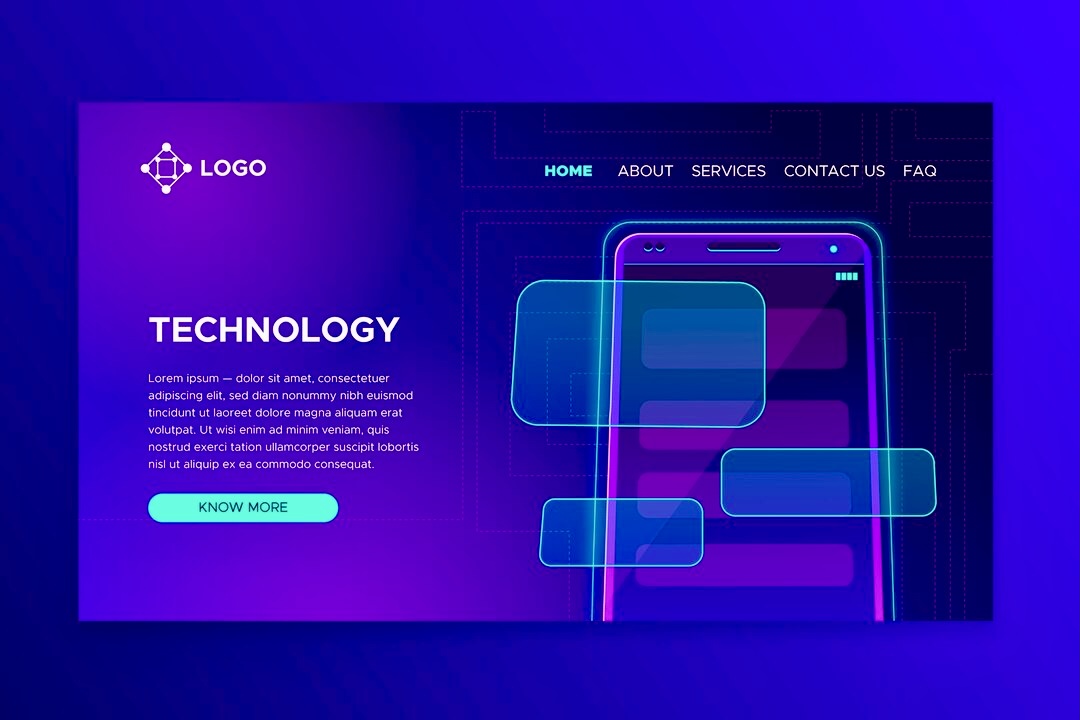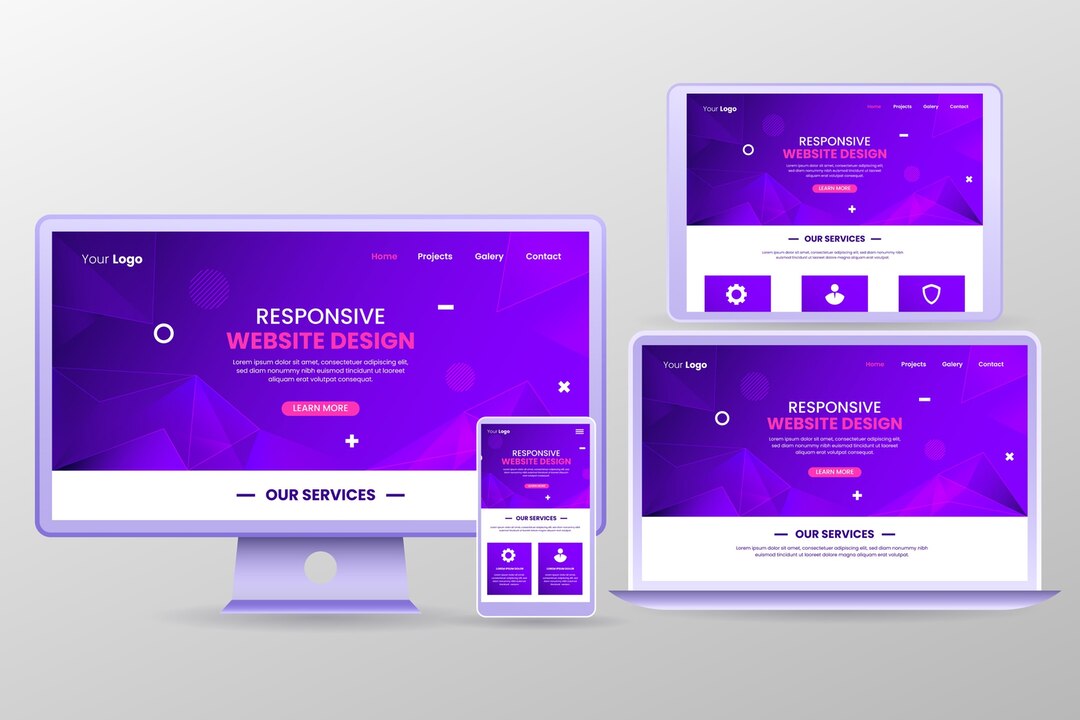Web design has evolved from being purely visual to becoming a key driver of most companies success, particularly for tech startups. The features of a good tech website are more than just eye-catching design—they’re essential for building credibility, driving engagement, and increasing conversions for tech startups.
As the tech industry continues to grow rapidly, the competition for users’ attention is fiercer than ever. A study by Forrester predicts that a well-designed user interface can boost conversion rates by up to 200%, while an optimized user experience (UX) can result in a 400% increase in conversions.
Tech companies must focus on building websites that not only showcase their products and services but also provide an intuitive, seamless experience for their users. From user-friendly navigation to compelling messaging, the features of a good tech website are essential in attracting potential customers, building trust, and driving business growth.
A professional tech marketing team is a great idea if you’re looking to build a website that stand outs and generate sales. Learn more about Valdoraer’s website design and marketing services for your tech startup here.
In this post, we’ll cover the four essential features of a good tech website, offering practical tips on how to implement these elements to ensure your site not only attracts visitors but also converts them into loyal customers.
1. Optimized User Experience (UX) Design
Having a well-designed website is more than just aesthetics; it’s about creating an intuitive, seamless experience for your users/visitors. A study by Forrester reveals that a well-designed user interface could increase conversion rates by up to 200%, while better UX design could yield conversion rates up to 400%.
For tech startups, ensuring your website is easy to navigate is important. Visitors should be able to find information quickly, whether they are looking for product details, pricing, or customer support. Consider employing tools like heatmaps and user session recordings to understand how users interact with your site and make necessary adjustments.

Key Elements of an Optimized UX Design
1. Clear Navigation: Ensure your website is easy to navigate, with clear menus and well-organized content.
2. Responsive Design: In today’s mobile-first world, your website must be fully responsive and provide a seamless experience on all devices; as over 50% of web traffic comes from mobile devices.
3. Fast Loading Times: A Google study found that 53% of mobile site visits are abandoned if pages take longer than three seconds to load; and no one wants a slow loading website.
4. Visually appealing design: Use a clean and modern design that reflects your brand’s identity and appeals to your target audience.
2. Compelling and Clear Value Proposition
Your value proposition is the backbone of your marketing strategy—it tells visitors why they should choose your product or service over competitors. A strong value proposition should be clear, concise, and placed prominently on your homepage.
Research shows that a well-crafted value proposition can improve conversion rates significantly. According to a study by HubSpot, companies that focus on crafting strong value propositions experience up to a 20% increase in conversion rates.
Key Elements of a Strong Value Proposition
1. Identify Your Unique Selling Points (USPs): What sets your tech company apart? Is it more efficient, user-friendly, or cost-effective?
2. Speak Directly to Your Audience’s Pain Points: Use language that resonates with your target audience, addressing their specific needs and challenges.
3. Include Customer Testimonials or Case Studies: Leverage social proof to build trust and credibility with potential customers.

3. Clear and Compelling Messaging/Content
You can’t list the features of a good tech website without mentioning content. Your message/content is king when it comes to driving traffic and establishing authority in your niche. For tech companies, your message should educate, inform, and guide potential customers through the buyer’s journey. What problem are you solving? Who is your target audience? What makes your solution unique?
Key Elements to Include
1. A Strong Headline: Grab visitors’ attention with a clear and concise headline.
2. A Concise Tagline: Summarize your value proposition in a few words.
3. A Clear Explanation of your Product or Service: Explain what you offer and how it benefits your customers.
4. Blog Posts: Regularly publish posts covering industry trends, insights, and how-to guides to position your company as a thought leader.
5. Case Studies and Customer Success Stories: Showcase how your product or service has successfully solved problems for other clients, building credibility and trust.
6. Strong Calls to Action: To guide visitors towards desired actions.
7. Optimized for SEO: Use relevant keywords throughout your content to improve your website’s search engine ranking.
4. Strong Call to Action (CTA)
One of the features of a good tech website is that it has a clear and compelling CTA that guides visitors to take the desired action, whether it’s signing up for a newsletter, downloading a demo, making a purchase, or contacting sales.

Key Elements of a Strong CTA
1. Clear and concise: Use strong and action-oriented language to encourage visitors to take the desired action.
2. Strategic placement: Place CTAs prominently where they are easily visible and accessible.
3. A variety of CTAs: Offer different CTAs to cater to various user preferences and goals.
Additional Features of a Good Tech Website
1. Showcase your team: Highlight your team members and their expertise to build trust and credibility.
2. Integrate social media: Connect your website with your social media profiles to drive traffic and engagement.
3. On-page optimization: Incorporate target keywords naturally into your website’s content, including headlines, meta descriptions, and image alt text.
4. Continuously monitor and improve: Use analytics tools to track your website’s performance and make data-driven improvements.
5. Technical SEO: Ensure your website is technically sound and easy for search engines to crawl and index.
6. A/B Testing: Every feature of a good tech website involves testing different versions of website or call-to-action buttons to determine which performs better.
7. User Behavior Tracking: Utilize tools to see heatmaps and user session recordings to understand user interactions and make data-driven improvements.
Final Thoughts
A strong, well-designed tech website is an essential part of any startup’s marketing strategy. It’s the hub of your digital presence, where potential customers, investors, and partners first interact with your company. By focusing on optimizing user experience, crafting clear and compelling messaging, and implementing strong calls to action, you can create a website that not only attracts visitors but also drives conversions and growth.
While building an exceptional tech website may seem daunting, investing in these key elements will help your startup stand out in a crowded market. Whether you’re looking to attract new clients, secure funding, or establish industry authority, your website is a powerful tool in your arsenal.
At Valdoraer, we specialize in helping tech startups create impactful websites that convert. Our team has experience in building high converting tech websites that sets you apart and grows your revenue. Reach out to us to today to learn how we can elevate your website and set your tech company up for long-term success.





